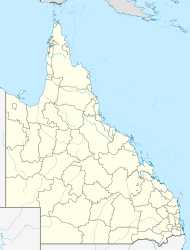St Helens Beach, Queensland facts for kids
Quick facts for kids St Helens BeachQueensland |
|||||||||||||||
|---|---|---|---|---|---|---|---|---|---|---|---|---|---|---|---|
| Population | 197 (2016 census locality) | ||||||||||||||
| • Density | 5.038/km2 (13.05/sq mi) | ||||||||||||||
| Postcode(s) | 4798 | ||||||||||||||
| Area | 39.1 km2 (15.1 sq mi) | ||||||||||||||
| Time zone | AEST (UTC+10:00) | ||||||||||||||
| LGA(s) | Mackay Region | ||||||||||||||
| State electorate(s) | Whitsunday | ||||||||||||||
| Federal Division(s) | Dawson | ||||||||||||||
|
|||||||||||||||
St Helens Beach is a coastal town in Queensland, Australia. It is located in the Mackay Region. In 2016, the town had a population of 197 people. It is known for its sandy beach along the Coral Sea.
History of St Helens Beach
Traditional Owners and Languages
The land around St Helens Beach is the traditional home of the Yuwibara people. They speak an Aboriginal language called Yuwibara. This language is similar to other Biri languages. The Yuwibara language area covers the Mackay Region.
Another Aboriginal language, Giya (also known as Kia), was spoken nearby. The Giya language area includes the Whitsunday Region. This region has towns like Bowen and Proserpine.
How the Town Got its Name
The town was first called Wootaroo. On April 1, 1973, its name was changed to St Helens. This name came from a large farm, or "pastoral run," called St Helens. This farm belonged to a person named John Macartney in the 1870s.
Later, on September 2, 1989, the name was changed again to St Helens Beach. The word "Beach" was added to show that the town is located right next to a sandy beach. This beach is along the beautiful Coral Sea.


